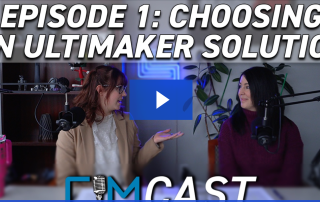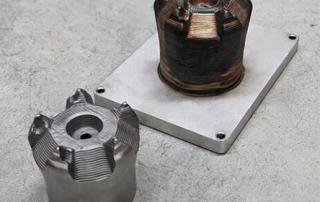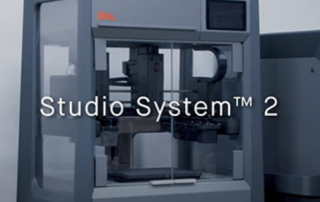Icam Students Working with Kimya 3D Filaments
KIMYA X Icam Bretagne: the students from Icam – Ecole de Production are working with Kimya 3D filaments Since its establishment in 1898, Icam has been expanding in France and globally, while remaining rooted in its values: audacity, trust, freedom, responsibility, solidarity, and collective success. Its essential mission is to educate engineers who are free, aware, committed, and active in their lives. All programs at Icam are designed to develop these qualities, which are the common denominator among all students and alumni. The Icam Production School, based in Vannes, welcomes young people aged 14 to 18 who have not found their path in the traditional school system. They are invited to undergo a highly practical training to rekindle their desire to learn and earn a diploma: a CAP in Production Installation Management. Through a machine park consisting of about twenty 3D printers, laser cutters, and machining centers, they work daily to meet the needs of industrial clients. KIMYA Invests in the Education Sector The use of Kimya filaments addresses the specific technical needs of industries, aiming to integrate them into industrial projects carried out by students and future professionals of the Icam Production School in Brittany. “The choice of Kimya filaments was made [...]
Choosing an UltiMaker Solution – CimCast
Choosing an UltiMaker Solution In our first episode of CimCast, we discuss Ultimaker's line of 3D printers to help aid in your buying and decision-making process.
Advantages of Additive Manufacturing Repair
The manufacturing industry has witnessed a revolutionary transformation with the advent of additive manufacturing, which has introduced innovative production solutions. In the field of repairs, additive manufacturing, particularly with Wire-DED systems, presents numerous notable advantages compared to conventional repair methods. Cost-Effectiveness: Repairing parts using additive manufacturing can be highly cost-effective. Traditional repairs often involve manual processes which can be time-consuming and expensive. Moreover, DED systems, as Meltio’s technology, allow for precise repairs by adding material layer by layer, minimizing waste and reducing the need for additional tooling or extensive machining. This can result in substantial cost savings. Design flexibility: Additive manufacturing enables unprecedented design freedom. When repairing parts, traditional methods often require conforming to the original design, which may not be optimal for repair purposes. Additive manufacturing allows for the creation of customized designs tailored to address the repair requirements. This flexibility enables the repair of complex geometries and the incorporation of enhanced features or reinforcements, leading to better performance and durability. Reduced lead time: Repairing parts traditionally can involve prolonged lead times due to the need to source replacement components or wait for specialized equipment and skilled labor. Additive manufacturing can significantly reduce these lead times by eliminating the reliance on extensive [...]
Metal 3D Printing Parts is Easy
Join Desktop Metal's team of experts for a walkthrough of the metal 3D printing process while reviewing operational information like safety procedures and waste requirements to gain a better understanding of how easy 3D printing a variety of metals can be. Webinar Details: Date: January 23rd, 2024 Time: 11:00 AM EST Metal 3D printing is a transformational technology – enabling otherwise impossible turnaround times, complex geometries, and production efficiency. Yet, popular metal additive technologies often utilize loose powder, high-powered lasers, or other features that require extensive facility upgrades, safety procedures, and environmental concerns. With Bound Metal Deposition™ (BMD) technology, Desktop Metal aims to make metal 3D printing accessible to any engineer, designer, or student with an easy-to-adopt workflow without industrial facility requirements. With this webinar, you will: Get familiar with the BMD metal 3D printing workflow, including a walkthrough of the software interface, loading feedstock, and what it takes to press print Explore data from testing and waste disposal we’ve done in our facility, where dozens of Studio Systems operate 24/7 Gain a better understanding of the sintering process to densify parts and how software-guided workflow helps lead to end-to-end success in producing 3D-printed metal parts Review real-world examples where the Studio System [...]
Formlabs 3D Printers Shape Blockbuster Movie Props
Did you know that Formlabs 3D printers have played a major role in bringing some of your favorite movies and TV shows to life? We often underestimate the hard work and talent behind the scenes, where dedicated individuals combine traditional craftsmanship with cutting-edge technologies like 3D printing to bring props to life. From the epic Marvel Cinematic Universe to the far, far away galaxies of Star Wars, and even the creepy Upside Down from Stranger Things, our printers have helped bring fantastical worlds to life! Read on to discover how a touch of Formlabs 3D printing technology can feel like magic. Crafting Imagination: 3D Printing Transforms Prop Creation in Entertainment The entertainment industry is always looking for the next big thing and the best technology to work seamlessly and effectively. Russell Bobbitt, Property Master at Marvel Studios, known for his work on Iron Man, Avengers: Endgame and Guardians of the Galaxy Vol. 2, says that “3D printing is just an everyday event. It’s a very useful tool” in the entertainment industry. Marvel's Prop-Making Marvels: The 3D Printing Magic Behind the Scenes The Marvel Cinematic Universe has made use of 3D printers on many occasions during the prop-making process. On average, Bobbitt estimates that [...]
Using Control X in the Dental Industry
Planned vs. Achieved Results from Dental Aligners While most Control X users are inspecting mechanical parts by comparing the manufactured results to the nominal CAD model, there are many other uses for Control X, such as in the dental industry. We will explore some of the benefits of using Control X in the dental industry in this post. For example, companies that manufacture aligners have methods and algorithms in place for predicting what the final results will be for a patient, once their aligners are removed. They examine the patient, design an alignment strategy, and install the alignment device to hopefully shift teeth to their ideal locations. Below is an example of an alignment result prediction. This model was computer-generated, showing the anticipated results of utilizing an alignment strategy for 6 months. Please note that this is an upper teeth set but we are showing them upside down to make the results easier to see. After the 6 month period elapses, we can then utilize Control X to determine how well the predicted results came out. The Orthodontist takes actual scans of the patient’s teeth, using an intraoral scanner after the alignment treatment is complete. Below is a result of the actual alignment. [...]






